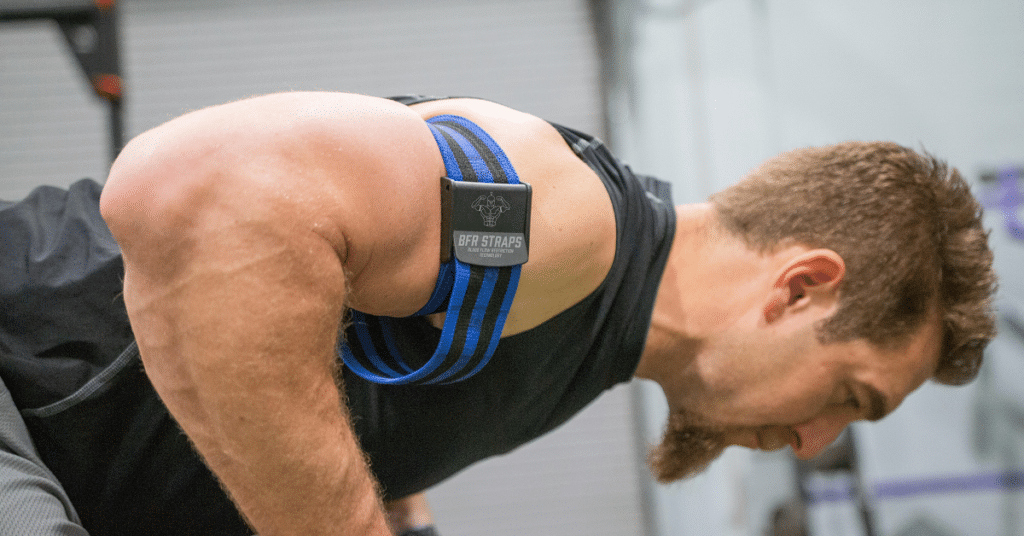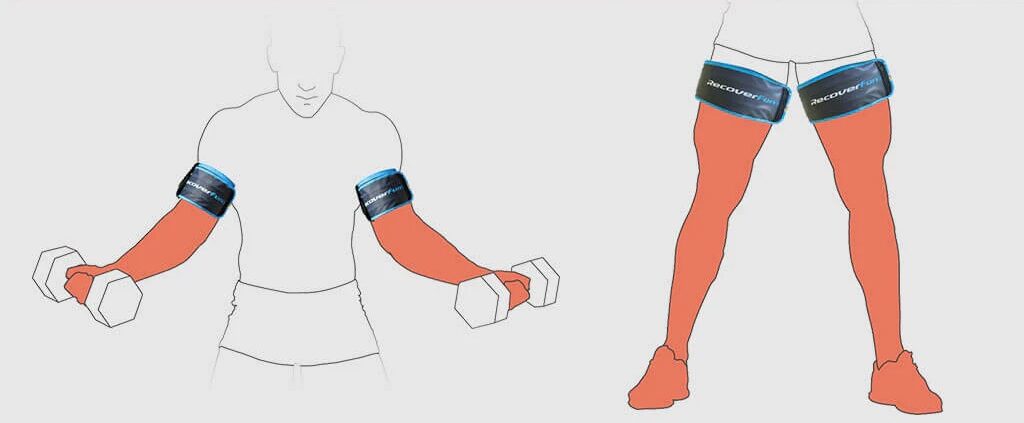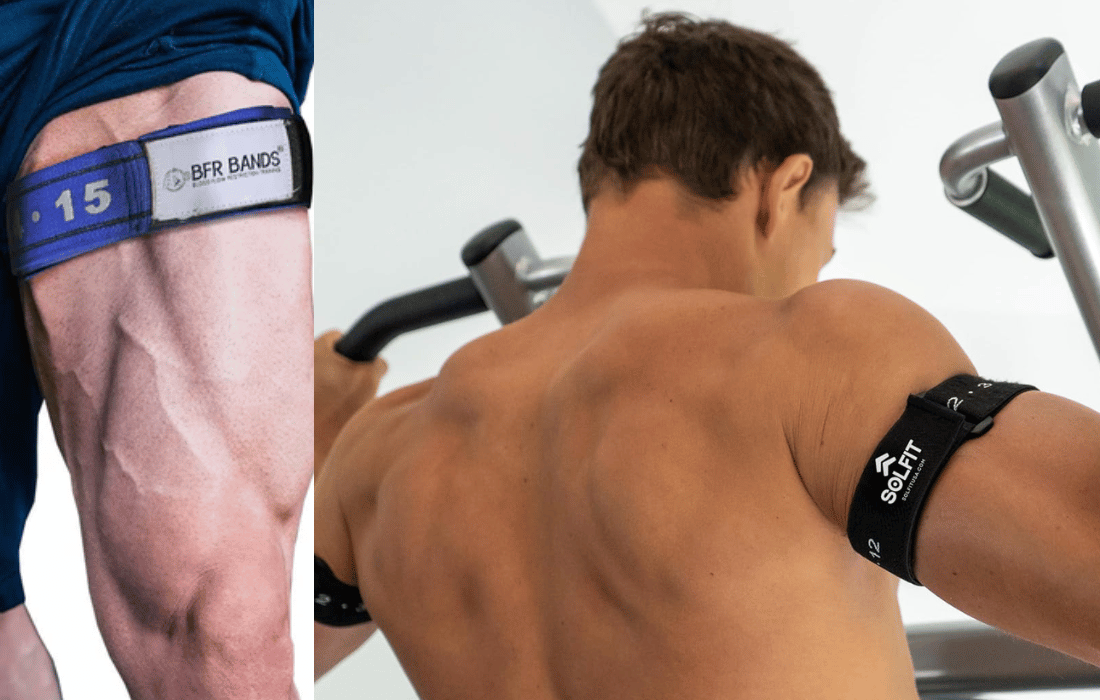In the competitive world of sports and fitness, athletes and trainers are constantly seeking innovative techniques to gain an edge. Blood Flow Restriction (BFR) training has emerged as one such tool, offering the ability to build strength and muscle while minimizing stress on joints and connective tissues. However, while BFR training offers numerous benefits, it is not without risks and should be used with care.
This article delves into the science, benefits, risks, and best practices of BFR training, emphasizing safety considerations for athletes and fitness enthusiasts.
What Are BFR Bands?
BFR bands are elastic straps or cuffs designed to restrict blood flow partially when wrapped around the arms or legs. The goal is to reduce venous blood flow (the blood leaving the muscle) while maintaining arterial blood flow (the blood entering the muscle). This creates a hypoxic environment in the working muscles, which stimulates physiological adaptations typically achieved through high-intensity exercise—without the need for heavy weights.
The principle is simple: by tricking your muscles into thinking they are working harder than they actually are, BFR training can promote muscle growth, strength, and endurance at lighter loads.

How Do BFR Bands Work?
When using BFR bands, the body responds to the lack of oxygen in the working muscles by:
- Recruiting fast-twitch muscle fibers, which are typically used during high-intensity training. These fibers are key to building strength and power.
- Increasing levels of lactate, which signals the body to release growth hormones and other anabolic (muscle-building) factors.
- Enhancing muscle protein synthesis, the process by which muscles repair and grow stronger.
Key Mechanisms:
- Metabolic Stress: BFR training increases byproducts like lactate and hydrogen ions, which are critical for stimulating muscle growth.
- Hormonal Surge: It boosts the production of growth hormones and IGF-1, essential for recovery and adaptation.
- Hypoxia-Induced Adaptation: Depriving the muscles of oxygen forces them to adapt, leading to increased endurance and strength over time.
Benefits of BFR Training for Athletes
1. Muscle Growth with Low Loads
Traditional strength training requires heavy lifting (70-85% of 1RM) to promote hypertrophy. BFR, however, achieves similar muscle growth using loads as low as 20-30% of your 1RM. This makes it particularly beneficial for:
- Athletes with joint pain or injuries.
- Older individuals who may struggle with heavy resistance training.
- Those in recovery or deload phases of training.
Study Spotlight: Research in the Journal of Applied Physiology demonstrated significant muscle growth and strength gains with low-intensity BFR training, comparable to heavy lifting.
2. Recovery and Rehabilitation
Athletes recovering from injuries, such as ACL tears or rotator cuff surgeries, face the challenge of losing muscle mass during periods of inactivity. BFR bands can help mitigate muscle atrophy and accelerate recovery by enabling safe, low-impact strength training.
Case Example: Post-ACL surgery patients using BFR saw faster recovery times and better strength retention compared to traditional rehabilitation methods.
Study Spotlight: Several studies have proven BFR training to improve recovery outcomes in post-surgical patients significantly.
3. Improved Endurance
Endurance athletes—runners, cyclists, swimmers—can use BFR bands during low-intensity cardio to improve:
- VO2 max: Maximum oxygen uptake.
- Capillary density: Better oxygen delivery to working muscles.
- Fatigue resistance: Over time, muscles adapt to the hypoxic environment, enhancing stamina.
4. Joint-Friendly Strength Training
For athletes in high-impact sports like MMA, wrestling, or motocross, joint health is a priority. BFR bands allow athletes to:
- Build strength without the strain of heavy weights.
- Reduce cumulative joint stress during periods of intense training or competition.
- Use low-impact exercises to maintain performance.
Risks and Cautions of BFR Training
While BFR training offers impressive benefits, it must be approached with caution. Misuse or over-reliance can lead to serious risks, especially if used for prolonged periods or under intense exercise conditions.
1. Improper Tightness Can Be Harmful
One of the most crucial aspects of BFR training is applying the bands with the correct level of tightness. If the bands are too tight, they can compress nerves or blood vessels, leading to numbness, tingling, or even tissue damage. Excessive tightness may also cause venous pooling, increasing the risk of blood clots.
- Risks of improper tightness:
- Nerve and blood vessel compression causing numbness or tingling.
- Dangerous levels of venous pooling, increasing the risk of blood clots.
To avoid these issues, aim for a snug but comfortable fit—about a 7 out of 10 on a tightness scale. Check circulation below the bands regularly, and listen to your body to distinguish between healthy exercise stress and potentially harmful discomfort. Start with a lighter application and gradually increase tightness if you don’t feel enough resistance.
2. Not for Prolonged Use or High-Intensity Workouts
BFR is designed for short bursts of low-to-moderate intensity training. Prolonged use or applying the bands during heavy, high-intensity movements like deadlifts or squats can overload your circulatory system and lead to excessive fatigue or delayed recovery.
- Guidelines for use:
- Limit sessions to 10-20 minutes per muscle group.
- Avoid applying BFR during heavy compound lifts or explosive power exercises.
Keeping sessions short and focused ensures you gain the benefits of BFR training without overloading your body. Integrating short BFR sessions into your routine can enhance your training without interfering with recovery or performance.
3. Health Conditions to Consider
BFR training isn’t suitable for everyone, particularly those with certain medical conditions. Athletes with cardiovascular issues, high blood pressure, or clotting disorders are at increased risk when using BFR. Pregnant athletes or those with chronic illnesses such as diabetes should also exercise caution and consult a healthcare provider before attempting BFR.
- Who should avoid BFR:
- Individuals with cardiovascular conditions or clotting disorders.
- Pregnant athletes or those with chronic conditions like diabetes.
If you fall into one of these categories, it’s best to get medical clearance before trying BFR. Safety should always come first, and a professional evaluation can help determine whether it’s appropriate for you.
4. Not a Standalone Training Method
BFR is a fantastic tool for specific purposes, but relying solely on it can leave gaps in your fitness. It’s not a replacement for heavy lifting, sport-specific drills, or endurance training. Over-reliance on BFR can limit progress in strength, speed, and overall athletic performance.
- Key points for balanced training:
- Use BFR as a supplement during recovery phases, deload weeks, or for targeted muscle growth.
- Combine BFR with traditional strength training, conditioning, and sport-specific work.
By integrating BFR strategically into a broader program, you can amplify its benefits while still focusing on well-rounded development. This ensures you build not only muscle and endurance but also the strength and athleticism needed for peak performance.
When used responsibly and in conjunction with other training methods, BFR can be a game-changing tool for athletes. Pay close attention to proper technique, monitor your body’s response, and always prioritize safety to maximize the benefits while minimizing risks.

Best Practices for Safe and Effective BFR Training
To maximize benefits while minimizing risks, follow these guidelines:
1. Invest in Quality Equipment
Choose bands that allow for precise adjustments, such as those from KAATSU or B Strong. Avoid makeshift solutions like elastic tubing, which can lead to inconsistent pressure.
2. Follow Proper Pressure Guidelines
- Arms: Apply bands with 50-70% occlusion.
- Legs: Apply bands with 70-80% occlusion.
- Check pulse: Ensure a pulse is present below the band to confirm arterial flow.
3. Choose the Right Exercises
BFR is best suited for isolated or bodyweight exercises, such as:
- Upper Body: Bicep curls, tricep extensions, lateral raises.
- Lower Body: Bodyweight squats, walking lunges, leg presses.
Avoid complex lifts like deadlifts or bench presses under BFR, as the risk of improper application increases.
4. Short Sessions Only
- Limit BFR training to 10-20 minutes per muscle group.
- Do not exceed two to three sessions per week to allow for recovery.
5. Gradually Integrate BFR
New to BFR? Start slow:
- Use the bands for one exercise per session.
- Monitor your body’s response before increasing usage.
Who Benefits Most from BFR Training?
BFR training can benefit a wide range of athletes, including:
- Combat athletes: Fighters can maintain strength while avoiding overtraining.
- Endurance athletes: Cyclists and runners improve muscular endurance with minimal joint strain.
- Injured athletes: Maintain muscle mass during rehabilitation.
- Recreational lifters: Add variety while reducing joint stress.
The Importance of Monitoring During BFR Training
Safety is the cornerstone of effective BFR training. Always monitor for the following warning signs:
- Numbness, tingling, or extreme discomfort.
- Skin discoloration below the bands.
- Unusual fatigue or delayed recovery.
If any of these occur, stop immediately and reassess the band application or consult a professional.
Conclusion: A Powerful Tool When Used Wisely
Blood Flow Restriction (BFR) training is a revolutionary tool for athletes looking to maximize muscle growth, strength, and endurance while minimizing joint stress. However, this method requires careful application and adherence to safety guidelines. When used correctly, BFR can complement traditional training, aid recovery, and unlock new levels of performance.
Yet, it’s not a one-size-fits-all solution. Overuse, improper application, or ignoring contraindications can lead to serious risks. Athletes must treat BFR training as a specialized technique—not a replacement for foundational strength and conditioning.
If you’re considering BFR training, consult a coach or healthcare provider to ensure it fits your goals and health status. With proper precautions, BFR bands can be a game-changer for athletes at any level.







